
We tested the water of the River Bîc. How is it done and what level of pollution did we find?
Surface waters in the Republic of Moldova are monitored permanently. This is done to understand its condition and to ensure a quick response if needed.
The monitoring process is not simple, and requires a team of people as well as high tech equipment. To understand this process, we accompanied a team from the Environmental Agency in the field.
Together, we collected samples from the River Bîc. We tested the level of oxygen in water, acidity and basicity, conductivity (different minerals and metals that can dissolve in water) and turbidity (opacity or lack of water transparency). On the riverbank, we saw the first test results, and another sample we took to the Agency Lab for further analysis.
So, let’s start the experiment. We travel to our first stop – the River Bîc, which is a tributary of the River Dniester and is located in the central part of the Republic of Moldova. The river is very polluted, mostly in the Chisinau area.
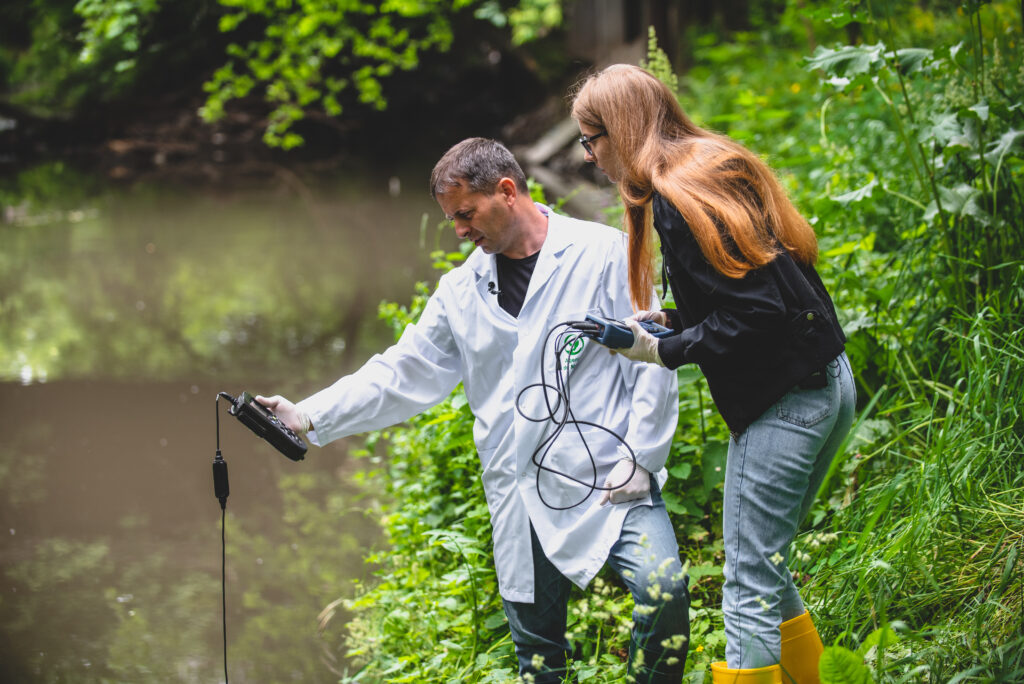 Testing the water of the River Bîc
Testing the water of the River Bîc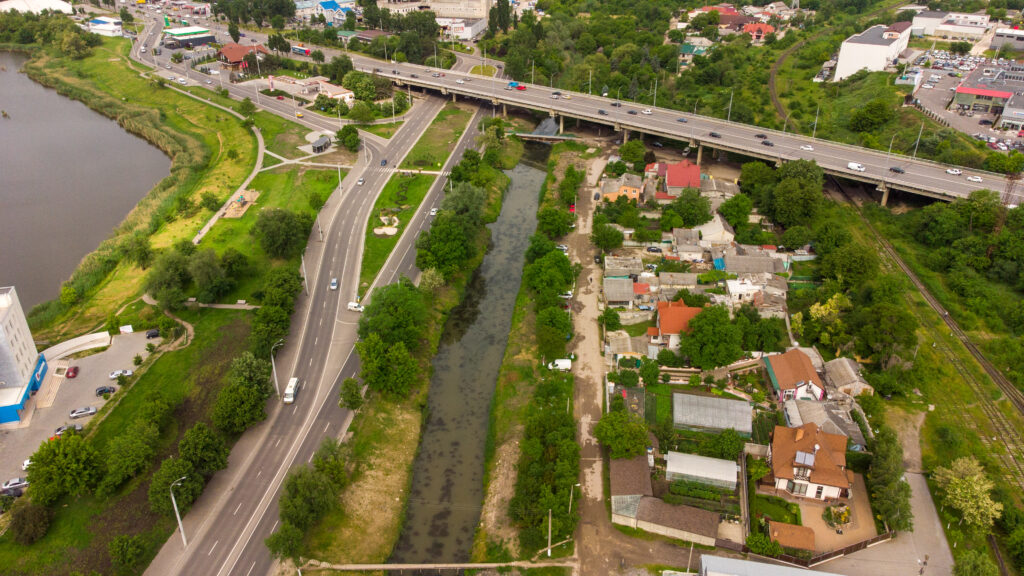 River Bîc, Chisinau
River Bîc, Chisinau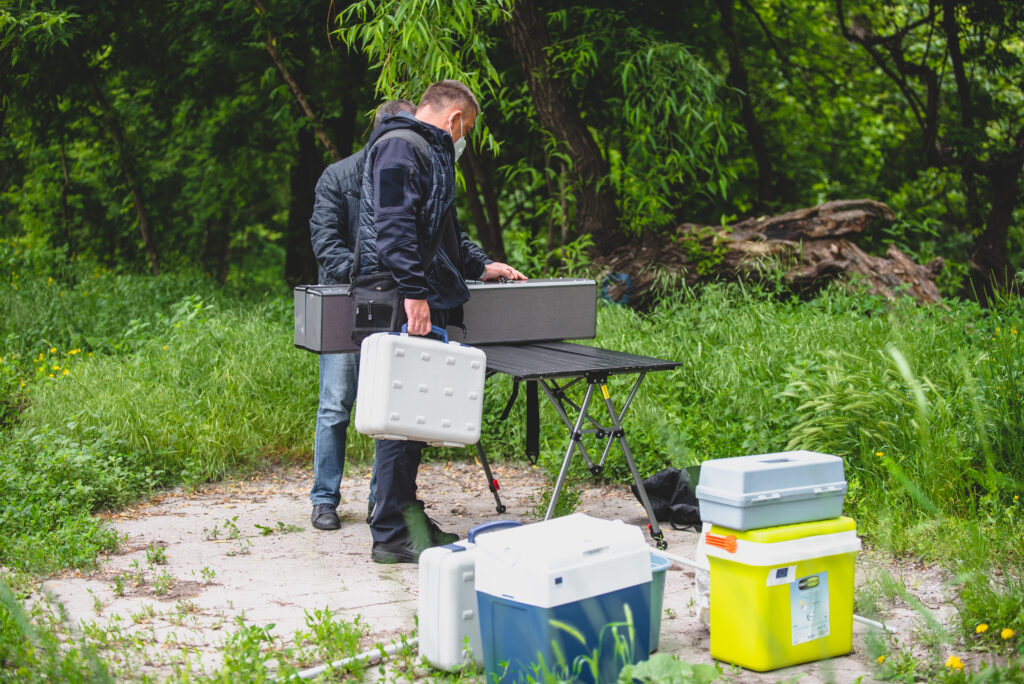 The team of the Environmental Agency prepares the working table
The team of the Environmental Agency prepares the working table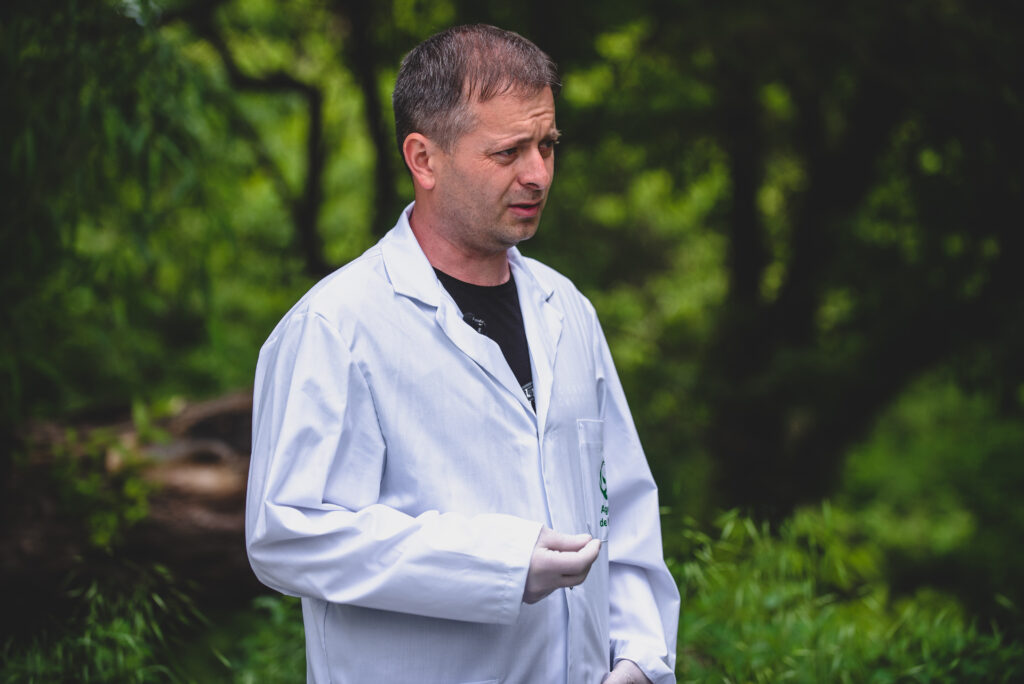 Anatol Josan, Key Engineer at the Ecological Investigation Service under the Environment Agency
Anatol Josan, Key Engineer at the Ecological Investigation Service under the Environment Agency
A car from the Environmental Agency awaits us. The team consists of three people. They prepare the equipment needed for the tests.
Anatol Josan will guide us during the whole process. He is Key Engineer at the Ecological Investigation Service under the Environmental Agency. Anatol is responsible for sampling surface water.
There are two ways to test water quality from a chemical point of view:
1. The water is tested in the field with special equipment;
2. Samples are collected and are transported to the laboratory for tests
The Environmental Agency tests water only from the point of view of chemical quality. Other institutions are responsible for testing drinking or bathing water.
Field tests are done using two methods, either by introducing special equipment into the water, or by collecting a sample.
After recording the results showed by the devices, we proceed to the second stage: data analysis and interpretation.
The conclusion we make after four different tests is that the River Bîc is polluted.
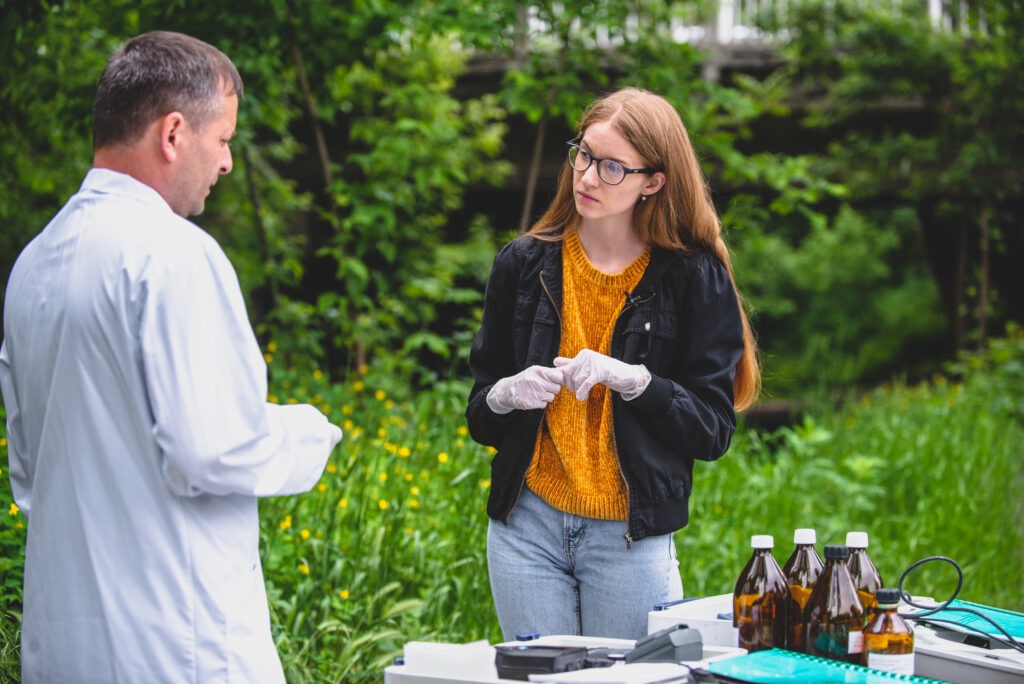 Anatol explains how to carry out a chemical test
Anatol explains how to carry out a chemical test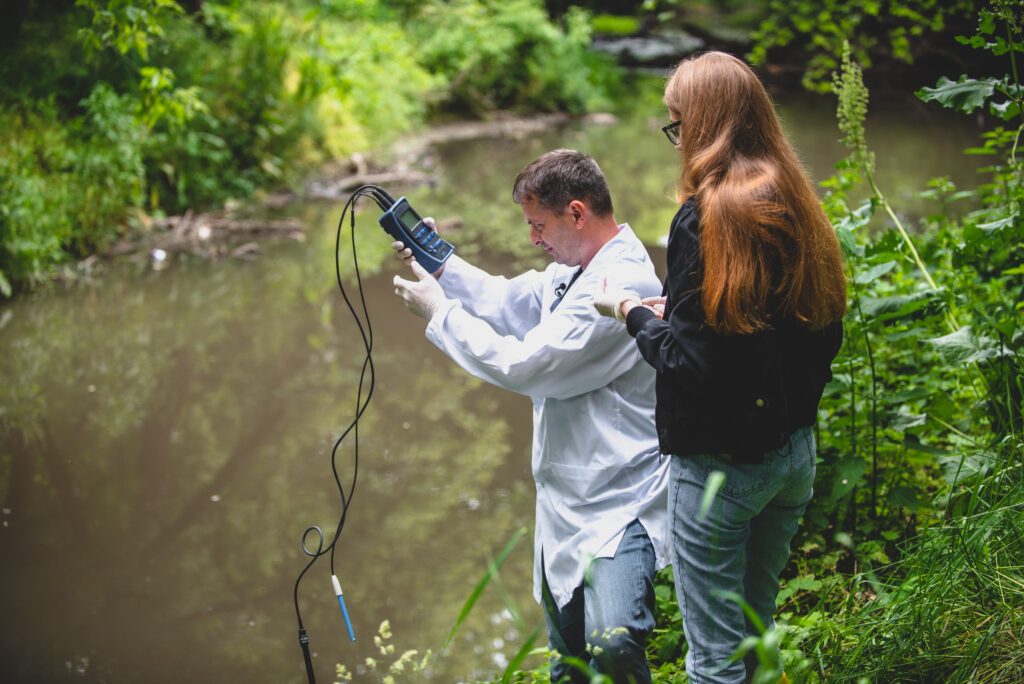 Together with Anatol we test the water for oxygen indicator
Together with Anatol we test the water for oxygen indicator The device that tests the pH indicator
The device that tests the pH indicator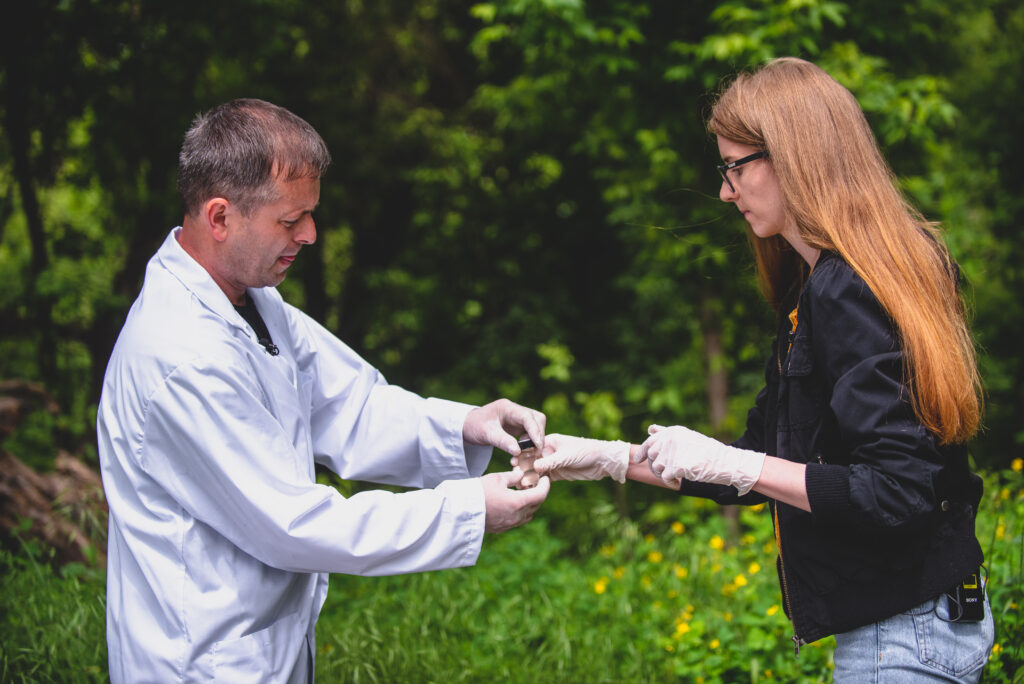 We prepare the sample for the turbidity test
We prepare the sample for the turbidity test
Even if the results are good for three indicators, the fourth indicator was in Category V, i.e. the worst category in terms of results. Respectively, according to the regulation, if at least one of the tested indicators falls into a low category, the water receives the status of “polluted water”.
But the initial tests are insufficient to have a general picture of the river water quality from the chemical point of view. To do this, it is necessary to apply the second method of analysis, i.e. to collect water samples from the river, to preserve them and send them to the lab.
Collection of samples is carried out according to a very strict regulation, which must be observed by the specialists. If this does not happen, we might get incorrect results.
Once in the laboratory, the samples are transmitted by Anatol to other specialists, who analyse the samples from a chemical point of view.
Depending on the chemical composition of the sample, the analysis takes from one day up to several weeks.
A lot of expensive equipment is necessary for such continuous monitoring and analysis process. Thanks to the financial support of the European Union Water Plus initiative for the Eastern Partnership (EUWI +), the environmental reference laboratory has received pieces of special equipment that allows the specialists to test the samples collected in the field using the most modern technologies.
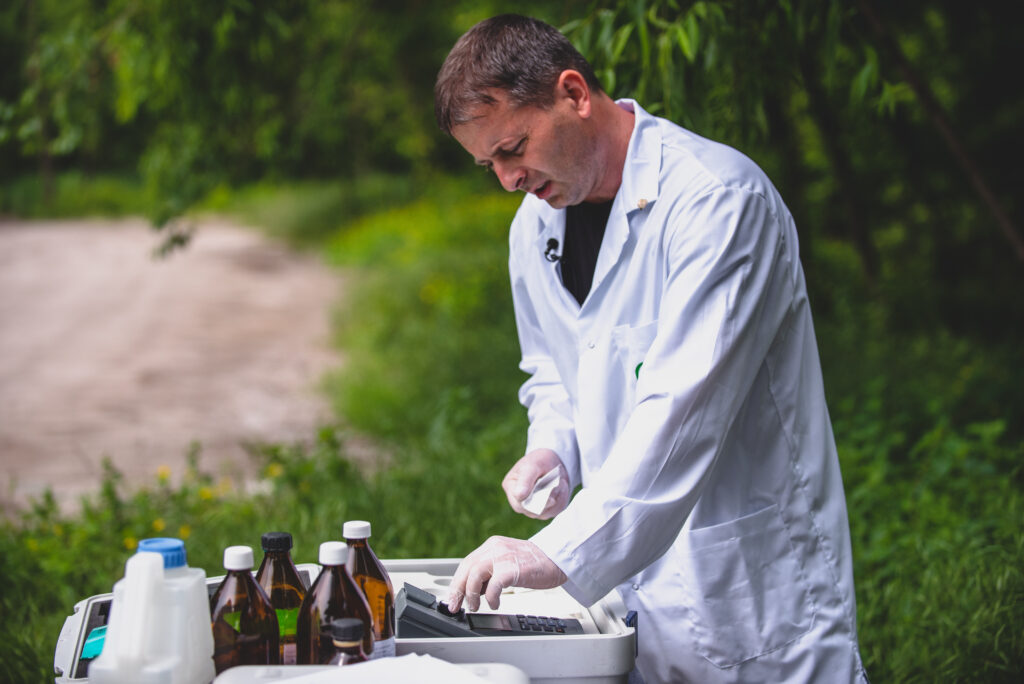 Anatol tests the turbidity
Anatol tests the turbidity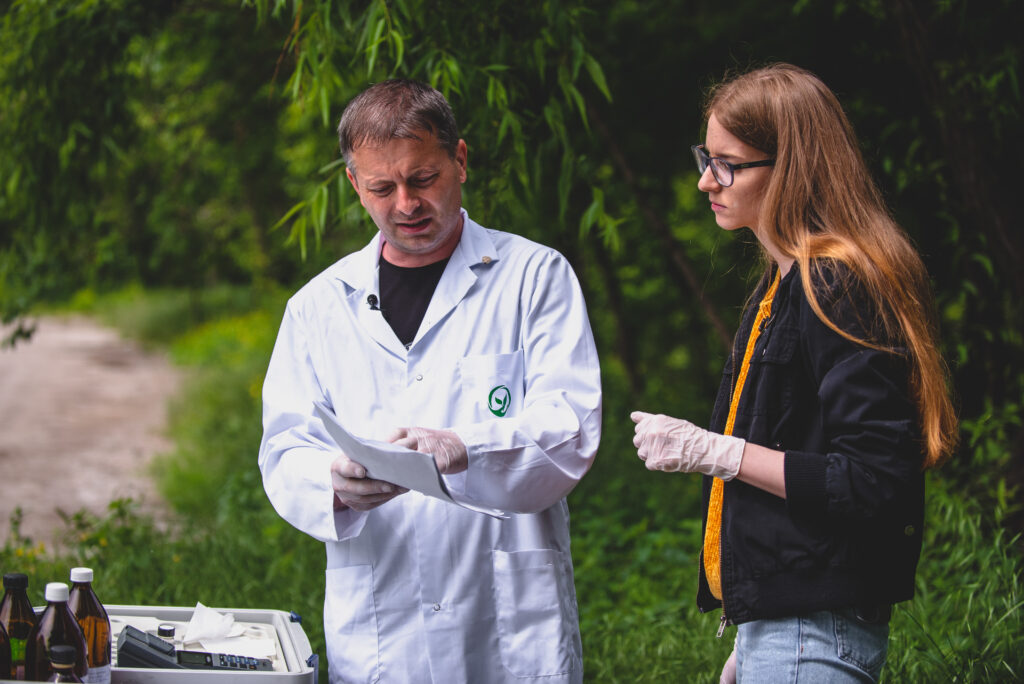 Anatol explains how we interpret the results obtained from testing
Anatol explains how we interpret the results obtained from testing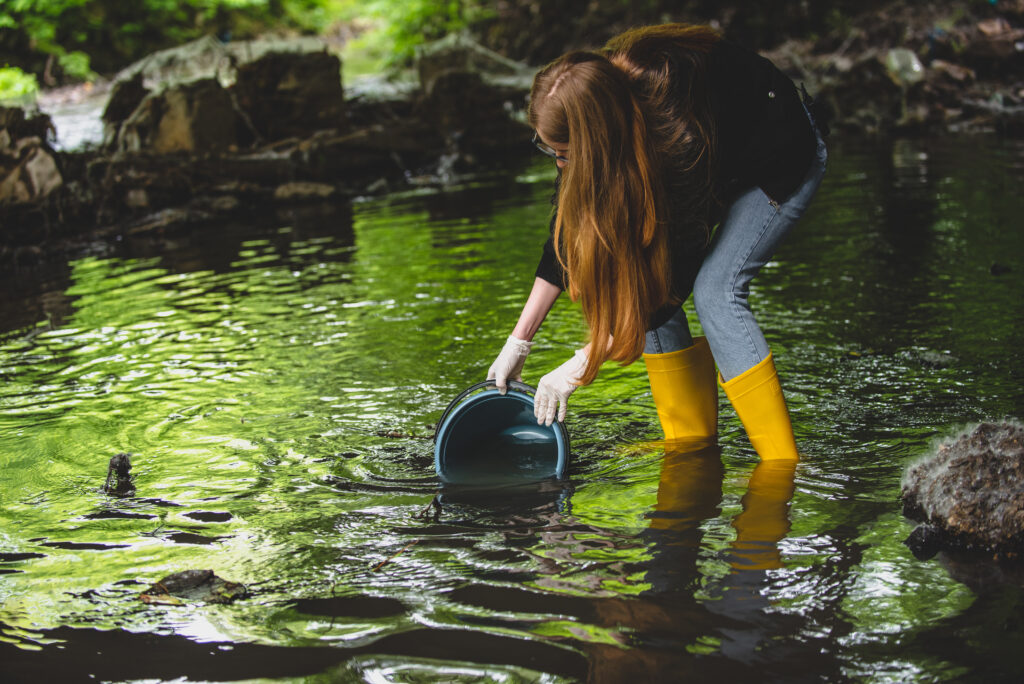 We take the samples for sampling, which will be sent to the laboratory
We take the samples for sampling, which will be sent to the laboratory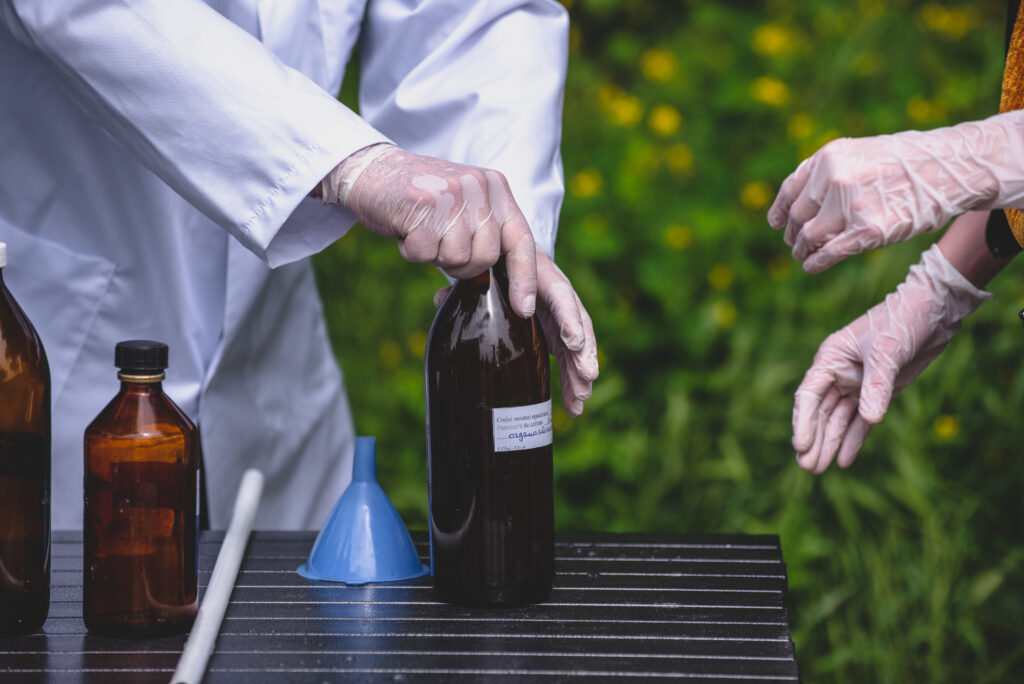 Preserving a sample that is about to be sent to the laboratory
Preserving a sample that is about to be sent to the laboratory
Marina Lungu, Head of Environmental Reference Laboratory of the Environmental Agency, explained that the high-performance equipment allows to get final analysis results in a shorter period, which greatly facilitates the work of specialists.
Specialists of the Environmental Agency regularly analyse all surface waters in the country. According to Marina Lungu, the situation is relatively good with larger rivers of Moldova, but the pollution problem is more serious in the small rivers. The source of this pollution comes from three key factors: companies, households and chemicals used for soil.
The monitoring of surface waters is an absolutely necessary activity, especially in the context of massive pollution. However, this activity does not reduce pollution, but only warns about it. The key stakeholders in this case are people, and responsibility is the most important thing lacking to solve this problem.
“Every citizen must be aware of the causes that may arise as a result of the actions we produce. Sometimes people simply pull out the sewer pipe, and it spills onto the ground, and when it rains all these substances get into the water. We have to be aware of this and take measures to do as little damage to the environment as possible,” concludes Marina Lungu.
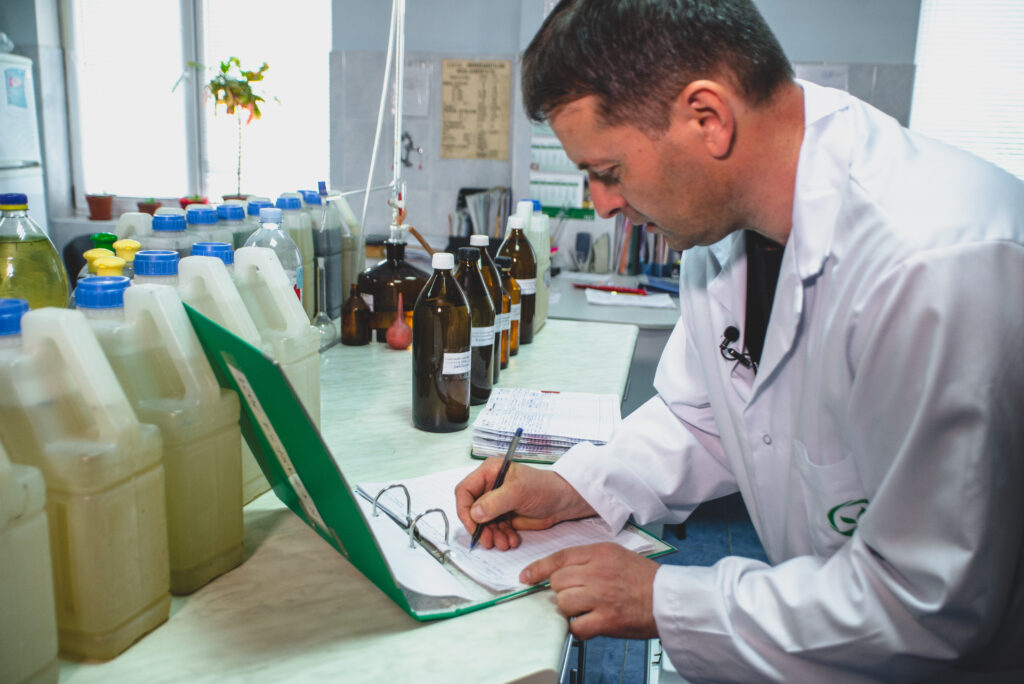 Anatol signs the delivery and acceptance act for samples taken from the field
Anatol signs the delivery and acceptance act for samples taken from the field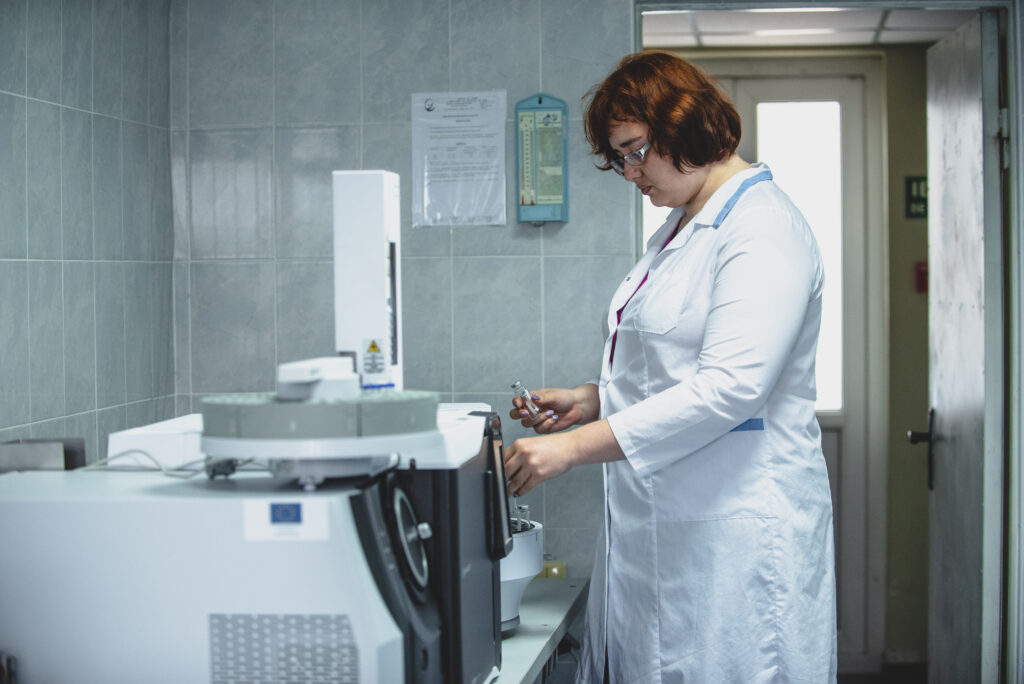 A specialist studies the samples brought from the field
A specialist studies the samples brought from the field Water analysis equipment, provided by the EUWI+ project
Water analysis equipment, provided by the EUWI+ project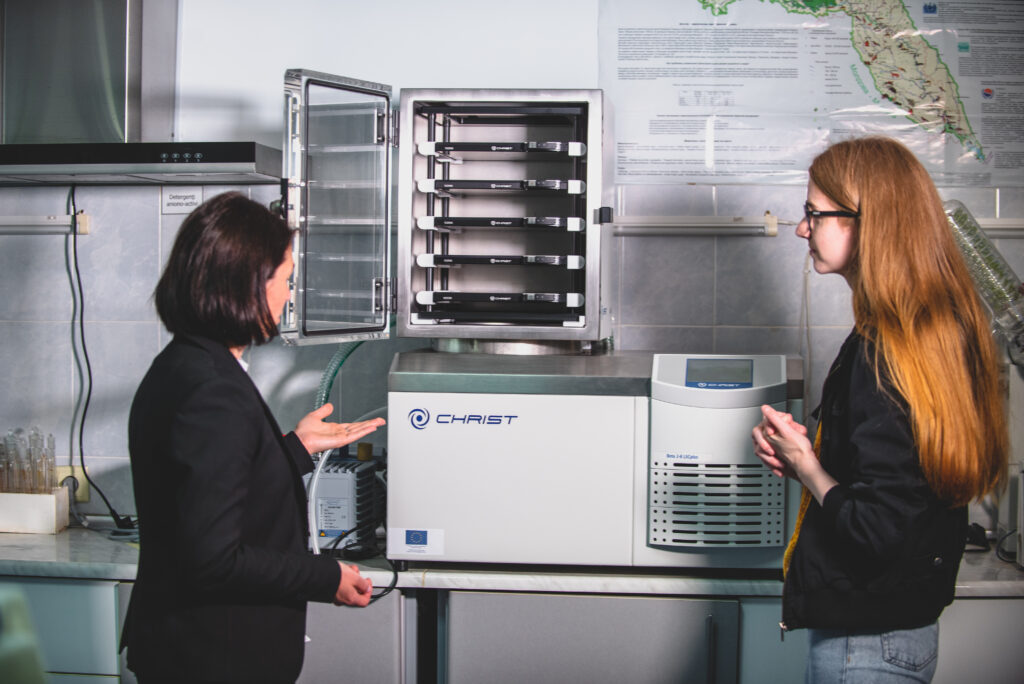 The head of the laboratory shows us how the water analysis equipment works
The head of the laboratory shows us how the water analysis equipment works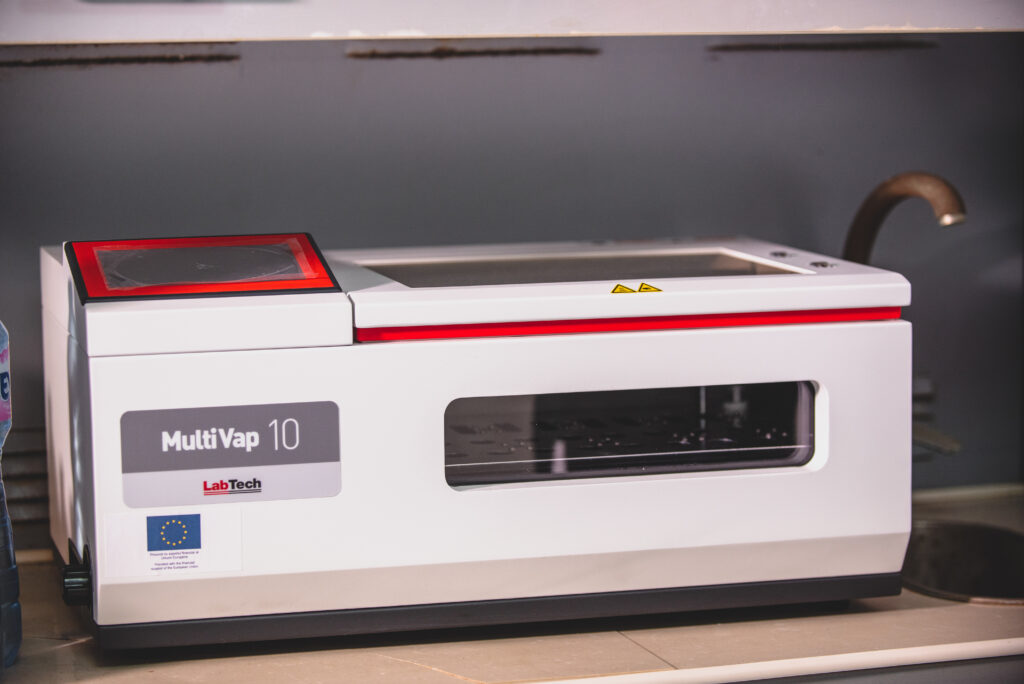 Water analysis equipment, provided by the EUWI+ project
Water analysis equipment, provided by the EUWI+ project
Launched in September 2016 for a duration of 4 years, the European Union Water Plus initiative for the Eastern Partnership (EUWI +) is one of the largest political dialogues and technical support commitments of the European Union to the water sector in the Eastern partner countries. EUWI + supports six partner countries (Armenia, Azerbaijan, Belarus, Georgia, Republic of Moldova and Ukraine) to align their legislation with the European Union’s water management policy, with a focus on trans-boundary rivers. The project is co-financed by the European Union, as well as Austria and France.
In Moldova, EUWI + has supported the development of a watershed management plan for the Danube-Prut and Black Sea region (15,000 km2, 1 million inhabitants) and a general plan for water supply and sewerage to improve access to safe water for the rural population of the Nirnova sub-basin (30 villages, almost 44,000 inhabitants). Moldova has adopted a Code of good agricultural practices to avoid nitrate pollution, amending the Water Law to comply with the best EU standards on water management and water quality.
Author: Elena Baranov
MOST READ
SEE ALSO
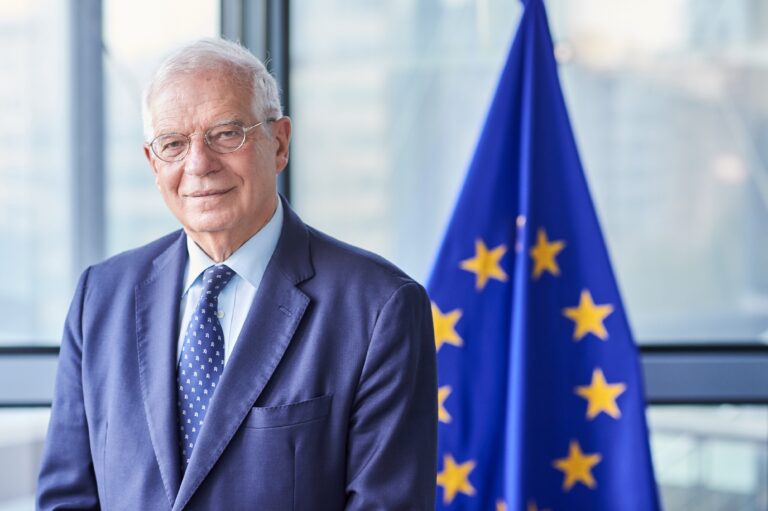
No, time is not on Russia‘s side

How to open an art business in Moldova: the experience of Alexandra Mihalaș

Be one step ahead of a hacker: check simple cybersecurity tips!
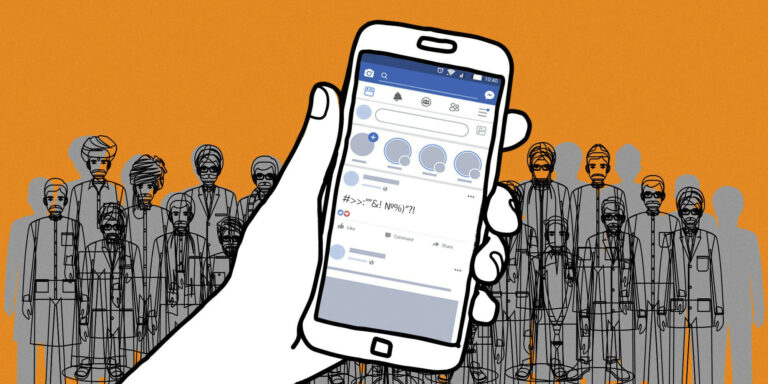
How to act and move on: strategies for women facing discrimination and online harassment

‘Learning is not a process but a journey’: the example of a school in Orhei
More campaign pages:
Interested in the latest news and opportunities?
This website is managed by the EU-funded Regional Communication Programme for the Eastern Neighbourhood ('EU NEIGHBOURS east’), which complements and supports the communication of the Delegations of the European Union in the Eastern partner countries, and works under the guidance of the European Commission’s Directorate-General for Neighbourhood Policy and Enlargement Negotiations, and the European External Action Service. EU NEIGHBOURS east is implemented by a GOPA PACE-led consortium. It is part of the larger Neighbourhood Communication Programme (2020-2024) for the EU's Eastern and Southern Neighbourhood, which also includes 'EU NEIGHBOURS south’ project that runs the EU Neighbours portal.

The information on this site is subject to a Disclaimer and Protection of personal data. © European Union,







